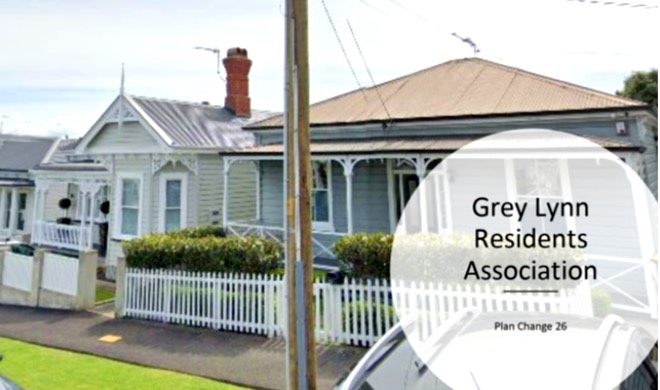
Auckland Council have advised us that they have decided to withdraw Plan Change 26.
The proposed plan change was intended to clarify the relationship between the Special Character Areas Overlay and underlying zone provisions within the Auckland Unitary Plan.
Auckland Council had initially determined that the Special Character overlay rule would apply where there was a corresponding rule in the underlying zone, but inconsistencies in the wording of the Unitary Plan created confusion.
Which rules should apply
The matter was dissected in three Environment Court cases and the court ruled that Auckland Council’s interpretation of the rules was flawed, and that both the Special Character overlay rules and the underlying zone rules should apply. This made things as clear as mud. Council subsequently decided that a plan change was needed to clarify which rules should apply.
In essence, the proposed plan change sought to ensure that the overlay rules would prevail over the underlying zone rules, while also making a few tweaks to the rules relating to height in relation to boundary, yards, paved areas and fences.
But was this a good approach? A report on the matter noted that:
“It would not be appropriate to introduce a general rule that makes the overlay provisions always prevail over zone and Auckland-wide provisions. This would create issues when the overlay provisions are more permissive than their equivalents elsewhere in the plan, but the overall intent of the overlay is to be restrictive. In such cases the overlay is not meant to enable particular activities where there are other reasons for a zone to restrict that activity.” (Coombes and Williams Overlay Analysis Report, December 2018)
Clarity welcome but lack of amenity concerning
While we supported the intention of the plan change to clarify the rules, we had concerns about a number of matters.
One of the issues was a lack of any consideration of amenity values of neighbouring sites. This is something that is a consideration in the Single House Zone, but not in the Special Character overlay and proposed Plan Change 26 made no mention at all of neighbours’ amenity. As houses within the Special Character overlay are often built very close together, the effect of additions or alterations on neighbours’ amenity can be significant and we felt that this should be considered.
Insufficient space for maintenance
We also supported the Herne Bay Residents Association in their efforts to get Council to consider that any additions to buildings within the Special Character overlay should provide sufficient space between neighbouring buildings to allow maintenance. It would be contrary to the principles of conservation to allow a neighbour to build so close to the side of your house that the weatherboards can’t be painted allowing them to rot away.
We were also concerned about the decision-making process with regard to notification and demolition, and the poor manner in which Council had communicated with the public about the plan.
A frustrating outcome
But in the end it was all to no avail. The submissions, further submissions, evidence, appearances at hearings, reports on the proposed plan change and the decision report from the independent commissioners who considered it all, came to nothing, after Council decided to withdraw the proposed plan change.
We’re very grateful for the effort Graeme Burgess and Tania Mace put into submitting and appearing at the hearing and we remain concerned about the matters we raised through the submission and hearing process.
So why did Council withdraw it?
Council considered that proceeding with the plan change would not produce better outcomes, and that much of the confusion created by the ambiguity in the Unitary Plan rules had been resolved through Council adjusting their resource consent processes.
In their notice of explanation regarding the withdrawal, the Council also referred to the National Policy Statement on Urban Development (NPS-UD) which was gazetted by the Government in July 2020 and aims to improve how our cities respond to growth to enable improved housing affordability and community wellbeing, by directing Council objectives and policies when it comes to urban development.
Meanwhile, bigger changes are on the horizon
Major policies in the NPS-UD that the Auckland Council must now give effect to (and which, as we understand it, will take precedence over their existing plans) include:
- Intensification
Council plans will need to enable (but not require) greater height and density, particularly in areas of high demand and access.
- Car parking
Councils will no longer require developers to provide car parking through their district and city plans. However, developers can still provide car parking if they wish. Mobility parking is not affected by this direction.
- Responsiveness
Councils must consider private plan changes where they would significantly to development capacity, good outcomes and are well connected by transport corridors.
- Wider outcomes
Councils are directed to give greater consideration to ensuring that cities work for all people and communities. Particular focus is given to access, climate change and affordability.
- Strategic planning
Councils are required to work together produce “Future Development Strategies”, which set out the long-term strategic vision for accommodating urban growth.
- Evidence and engagement
Councils must use a strong evidence base for their decision making and ensure they engage with Maori, developers and infrastructure providers.
We’ll bring you more information about what NPS-UD is likely to mean for Grey Lynn as we discover more.
Meantime, you can read more about NPS-UD here.
Or check out the ongoing coverage in NZ Herald and Stuff.







The article states “Councils must use a strong evidence base for their decision making and ensure they engage with Maori, developers and infrastructure providers.”.
But what about including something along the lines of “and local residents, and specifically neighbours to developments.” … or similar!
I got completely ambushed by a developer who gave me one days notice that my fence was being removed (even though I had built and paid for it!).